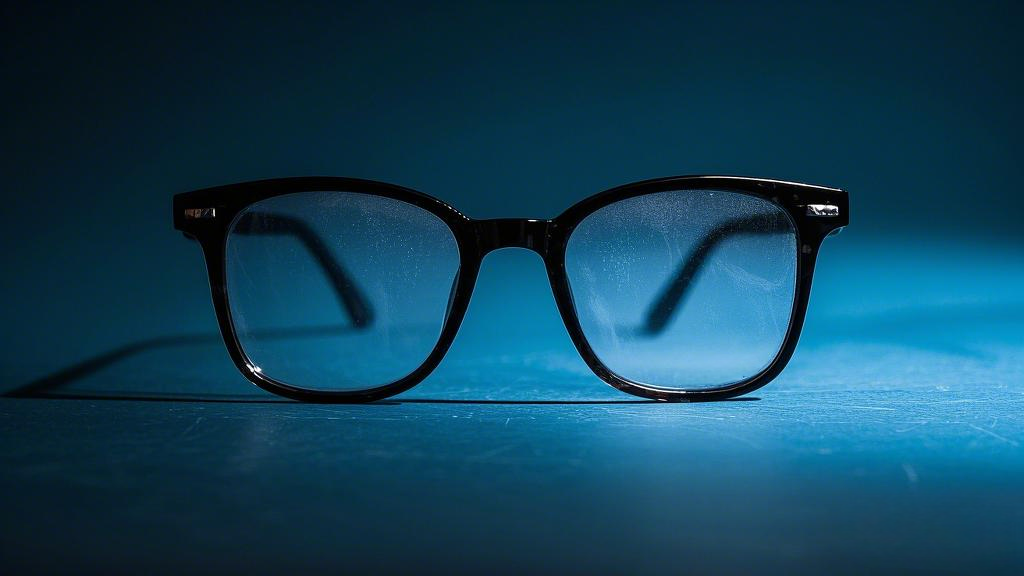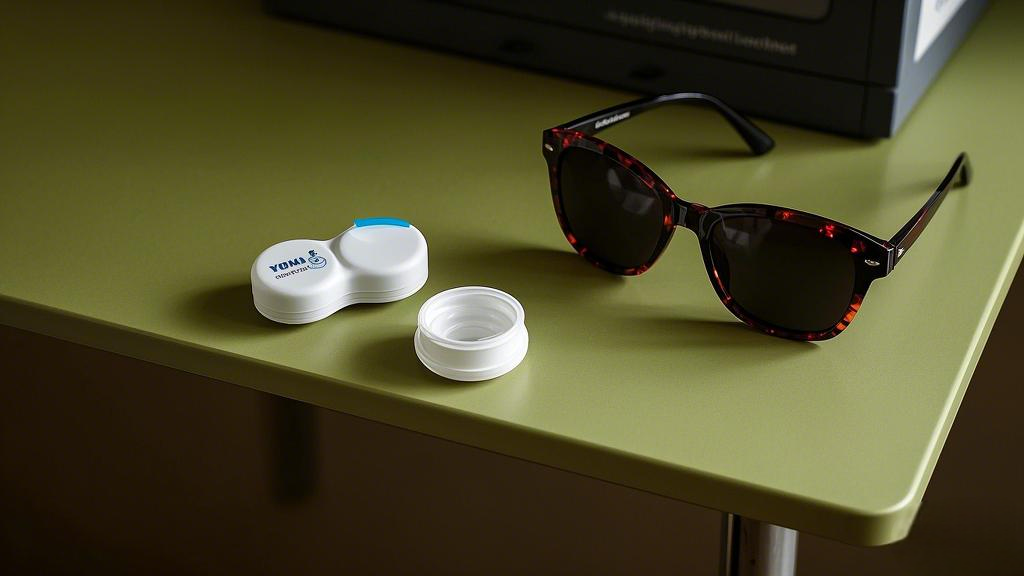Free UK/DE/FR/IT/ES/US Shipping SHOP NOW
Stepping out into the sun while needing corrective lenses can be a bit of a conundrum. Prescription sunglasses seem like the ideal solution, but they come with a host of questions. Are polarized lenses a must? How do you ensure the right fit? If you’ve ever found yourself scratching your head over these queries, you’re in the right place. In this article, we’ll dive deep into the most frequently asked questions about prescription sunglasses, arming you with the knowledge to make the best choice for your vision and style needs.
The article mainly answers the following questions:
- 1.How to Remove Scratches from Prescription Sunglasses with Coating?
- 2.Are Contact Lens Prescriptions the Same as Glasses Prescriptions?
- 3.What is Axis in a Glasses Prescription?
- 4.Do Prescription Sunglasses Need to Be Polarized?
1. How to Remove Scratches from Prescription Sunglasses with Coating?
Scratches on prescription glasses are a common issue, but they can be annoying when they obstruct your vision. If you’re dealing with minor scratches on coated lenses, there are several methods you can try to reduce or eliminate them. However, it’s important to handle your glasses with care to avoid damaging the protective coatings.
- Remove Light Scratches with a Microfiber Cloth
For light scratches or surface marks, you can try a simple cleaning technique using a microfiber cloth and mild dish soap:
- How to Clean: Dampen the microfiber cloth with a little water and add a drop of mild dish soap. Gently rub the scratched area in a circular motion. This method works best for light, surface-level scratches that haven’t penetrated the lens coating.
- Why It Works: The microfiber cloth is soft and non-abrasive, so it won’t cause additional damage to your lenses.
- Use Scratch-Remover Kits for Deeper Scratches
If the scratches are deeper or more noticeable, you may need a specialized scratch remover kit:
- Scratch Remover Kits: These kits often include polishing compounds designed to reduce the appearance of scratches. When using a scratch remover kit, make sure it is safe for coated lenses, as some products may damage anti-reflective or anti-scratch coatings.
- How to Use: Follow the instructions included with the kit carefully. Always test the product on a small, hidden area of the lens before applying it to the entire surface to ensure compatibility with your coating.
- Important Tip: Use the remover product sparingly, and rub gently to avoid further damage to the lens.

- When to Seek Professional Help
If you’re unable to remove the scratches yourself, or if you’re unsure about the safety of the product, it’s time to seek help from an optician or eyewear professional. Professionals have the right tools and expertise to fix scratches or recommend lens replacement if necessary.
- Prevent Future Scratches on Coated Lenses
Prevention is key to avoiding future scratches on your prescription glasses:
- Store Your Glasses Properly: Always place your glasses in a hard case when not in use to protect the lenses from scratches.
- Use a Microfiber Cloth: Clean your lenses regularly with a microfiber cloth. Avoid using paper towels or tissues, as these can cause small scratches over time.
- Clean with Care: When cleaning your glasses, always use a mild cleaner that’s safe for lens coatings and avoid harsh chemicals.
- Important Considerations for Coated Lenses
Many prescription glasses come with coatings such as anti-reflective, anti-scratch, or UV protection. These coatings are more sensitive than the lens material itself, and using abrasive cleaning methods or harsh products can strip away these protective layers. Always choose products and methods that are safe for coated lenses.
By following the right cleaning and scratch-removal techniques, you can extend the life of your prescription glasses and keep them clear and comfortable. If in doubt, always consult a professional optician to ensure your lenses remain in great condition.

2. Are Contact Lens Prescriptions the Same as Glasses Prescriptions?
You may be wondering: Can I use my contact lens prescription for my prescription sunglasses? The answer is no. Even though both contact lenses and glasses are meant to help you see clearly, they work in different ways.
Contact lenses sit right on your eyes. So, they need to fit well and have very precise power. Also, the way they correct astigmatism is different from glasses. For example, when measuring the axis for astigmatism in contact lenses, they have to consider how the lens moves on the eye.
Glasses, on the other hand, are worn a bit away from your eyes. This means the prescription degree can be different, especially if your prescription is complex. So, don’t try to use your contact lens prescription for prescription sunglasses. Always get a new eye exam and a proper glasses prescription to make sure you can see clearly.
Tip: Because contact lenses are attached to your eyes, they generally have a lower degree than glasses.

3. What is Axis in a Glasses Prescription?
If you’ve ever looked at your glasses prescription and seen the term “axis,” you might have wondered what it means. Simply put, the axis is a measurement that indicates the orientation or direction of your astigmatism.
For people with astigmatism, the eye is not perfectly round like a ball, but rather more oval or egg-shaped. This irregular shape causes light to focus on multiple points in the eye, leading to blurry or distorted vision at all distances. To correct this, the glasses prescription includes the axis value, which tells the optician the precise direction in which the astigmatism occurs.
The axis is measured in degrees, ranging from 0 to 180 degrees, and it is an important component in crafting lenses that will help you see clearly. For instance:
- An axis of 90 degrees indicates that the astigmatism is oriented vertically (up and down).
- An axis of 180 degrees indicates a horizontal orientation (side to side).
- Any value in between corresponds to the angle of the astigmatism.
The axis works alongside the cylinder value (which describes the degree of astigmatism), and together, they help your optician create the right lenses to correct your vision. By accurately aligning the prescription with your eye’s unique shape, the right axis ensures that your vision is clear, sharp, and free from the blurriness caused by astigmatism.
Without this precise axis measurement, your lenses wouldn’t correct your vision properly, and you could still experience blurry or distorted eyesight. Therefore, it’s a crucial aspect of your glasses prescription if you have astigmatism.

4. Do Prescription Sunglasses Need to Be Polarized?
Many individuals often ponder over this question: Is it truly essential to have polarized prescription sunglasses? The answer isn’t one-size-fits-all; rather, it hinges significantly on your lifestyle and daily activities.
For those who lead an outdoor-centric life, polarized lenses are really helpful. Take, for instance, individuals who frequently engage in water-based activities such as fishing, boating, or surfing. When sunlight reflects off the water’s surface, it creates a harsh and blinding glare. Polarized prescription sunglasses act as a sophisticated filter, effectively blocking this intense glare. This not only enhances visual clarity but also reduces eye strain, allowing you to focus better on the task at hand. Similarly, if you’re an avid skier or snowboarder, snow has a high reflectivity that can cause glare, which can be both uncomfortable and dangerous, increasing the risk of accidents. Polarized lenses can mitigate this issue, providing a clearer view of the slopes and improving safety.
On the flip side, if your daily routine mainly takes place indoors or in low-light environments, the benefits of polarized lenses might be less pronounced. In such settings, polarized lenses, which are designed to combat glare, find that the glare they need to deal with is minimal. So, investing in polarized prescription sunglasses may not be as crucial.
In conclusion, polarized prescription sunglasses are not an absolute necessity for everyone. However, understanding your lifestyle and the environments you often go to is crucial. Glare can be a common annoyance in certain situations. In such cases, polarized prescription sunglasses can bring several benefits. They can greatly improve your visual experience. They can also protect your eyes and provide an additional level of comfort.

Conclusion
The provided texts cover various common questions about glasses. The key takeaways are as follows. First, when removing scratches from coated prescription glasses, you should handle them with care. If you need to remove the scratches, it’s advisable to seek professional help.
Second, glasses prescriptions are different from contact lens prescriptions. Third, the axis in a glasses prescription plays a vital role in correcting astigmatism. Finally, if you are often outdoors, polarized prescription sunglasses will be beneficial to you. In summary, this knowledge aids in proper glasses use, maintenance, and promotes resource conservation.





